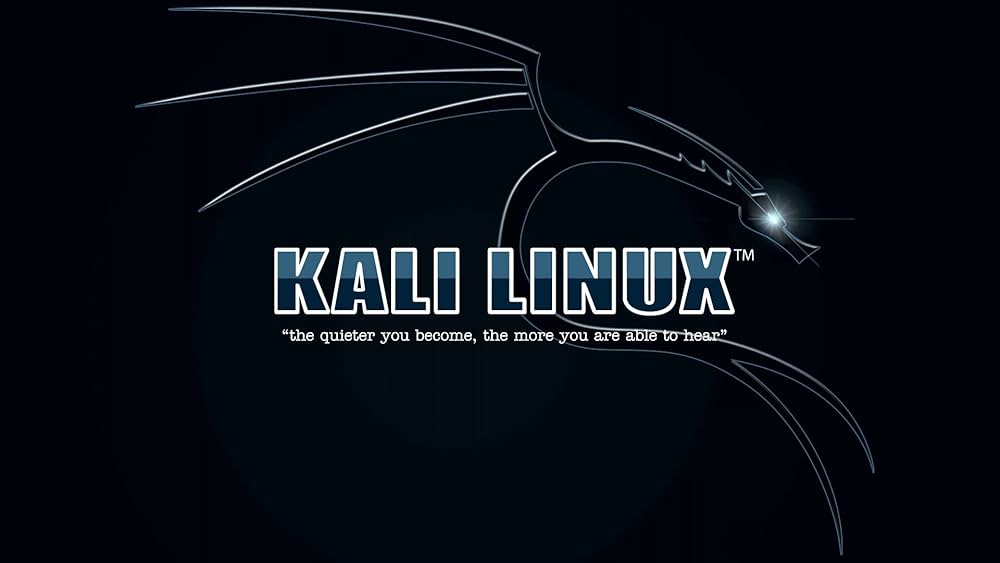Specific operating systems are frequently associated with specific tasks. Anything linked to content or graphics creation makes us think of macOS. Likewise, any situation of hacking or tinkering generally with network utilities is assigned to a specific operating system known as Kali Linux.
What is Kali Linux?
Kali Linux refers to a Linux Security Distribution based on Debian that was created mainly for advanced penetration testing and computer forensics. Kali Linux includes hundreds of tools that are well-suited to a variety of information security tasks like reverse engineering, computer forensics, security research, and penetration testing. Their earlier information security operating system was known as BackTrack. Kali Linu’s first version, Kali 1.0.0, was released in March 2013. Kali Linux is presently supported and funded by Offensive Security.Kali Linux is a carefully formed operating system designed especially for penetration testers and network analysts. The existence of a variety of tools that are already installed with Kali Linux turns it into a swiss-army knife for ethical hackers. Earlier known as Backtrack, Kali Linux currently promotes itself as an expert heir with advanced tools for testing. As opposed to BackTrack, which had various tools that serve the same motive, resulting in a bloated package of unnecessary utilities. Hence, with the help of Kali Linux ethical hacking becomes much easier.
Who uses Kali Linux and Why?
Kali Linux is a one-of-a-kind operating system that is used openly by both the bad and good guys. This operating system is widely used by both black hat hackers and security administrators. One prevents and detects security breachers, while the other identifies and potentially exploits security breachers. Kali Linux can be used for any security toolbox due to the several tools being pre-installed and configured on the operating systems. There are various reasons for you to use Kali Linux. Some of these reasons include:
Kali Linux is as Free as it Gets: It has always been and will continue to be free always.
More Tools than You can Imagine: Kali Linux includes more than 600 types of security analytics and penetration testing tools.
Open Source: Once you become a member of the Linux Family, you will understand that Kali adheres to the extremely admired open-source model. Their GIT development tree is open to the public, and their entire code can be made available for any type of modification.
Multilingual Support: While most penetration tools are written in the English language, Kali has a strong multi-language support team that allows users from across the globe to operate in the language that they are comfortable with. It even allows them to find tools in their native language that they may need to complete their job.
Entirely Customizable: Knowing that everyone may not agree with their design model of Linux, the developers at offensive security have tried to make it as simple as possible. This makes sure that more users can explore Kali Linux and customize it according to their liking.
Professionals Who use Kali Linux
The installation of Kali Linux is a breeze. All you need to do is ensure that you have hardware that is compatible. Kali runs on ARM (ARMHF and ARMEL), amd64, and i386 platforms. There are many ways to install Kali Linux. Some of the methods include:
Direct (Laptop or PC): You can install Kali Linux directly on a laptop or personalized computer by using a Kali ISO image. If you have an extra PC and have some prior knowledge about Kali Linux, then this method is ideal for you. In addition to this, if you intend to test access points, installing Linux straight onto a laptop that is enabled by WiFi is recommended.
Virtualized (Citrix, Oracle VirtualBox, Hyper-V, VMware): Kali Linux helps the majority of well-known hypervisors. It can even be easily integrated with the most popular hypervisors. Pre-configured images can be downloaded from the original Kali Linux website. An ISO file can also be used to manually install the OS in the selected hypervisor.
Cloud (Microsoft Azure, Amazon AWS): Due to the increase in the admiration of Kali Linux, both Azure and AWS offer Kali Linux images
USB Boot Disc: A boot disc can be formed using Kali Linux’s ISO to manage Kali Linux on a system without installing it or for certain other purposes.
Windows 10 (App): Kali Linux can now be run in Windows 10 across the globe through the command line. Since this installation is still a part of the beta mode, all the features may not be operational.
MAC (Single or Dual boot): Linux can easily be installed on a MAC as a primary or secondary operating system. This installation setup can be configured using parallel or through the boot functionality of MAC.
- How to Install Kali Linux using Virtual Box?
The simplest and most popular method is to install Kali Linux and run it using VirtualBox from Oracle. This method allows you to keep using your current hardware while at the same time allowing you to experiment with the feature-rich Kali Linux. The best part is that everything is free; both Oracle VirtualBox and Kali Linux. Here is a guide to installing Kali Linux with Virtual Box:
Step 1: Go to the Kali Linux original website. This will result in the download of an OVA image, which can then be imported to the VirtualBox.
Step 2: Open the VirtualBox application and choose the import appliance from the file menu.
Step 3: “Appliance to Import” appears on the following screen. Navigate to the downloaded OVA file’s location and click open.
Step 4: When your clock opens, you will be returned to the “Appliance to Import” page; just click on next.
Step 5: The “Appliance Settings” screen portrays an analysis of the system settings; keeping in default. Notice the Virtual Machine location and click on import.
Step 6: The Kali Linux OVA appliance will now be imported by VirtualBox. This procedure can take around 5 to 10 minutes.
Step 7: Kali Linux has now been installed successfully on Virtualbox! The Kali Linux VM should now be visible in the console of VirtualBox.
Step 8: Within the VirtualBox Dashboard, select the Kali Linux VM and press the start button to boot up the operating system of Kali Linux.
Step 9: Enter “Root” as the username and click on next on the login screen.
Step 10: As previously stated, enter the password and click on “Sign In”. Congratulations! You have now successfully logged in and you should now see the Kali Linux GUI Desktop.
Getting Started with Kali Linux GUI
The Kali Linux always comes installed with GUI (Graphical User Interface) for making it easy to navigate the major commands. If not, you can always install it. Here’s how to start with GUI in Kali Linux.
- At first, install the given desktop environment, called GNOMEYou can now check or enable the GUI option, which will start after reboot automatically (an optional step). You use a command “#systemctl isolate graphical”, it will start the CentOS8/RHEL8 and will not require the reboot.
Well! It is done, you have successfully started the Kali Linux GUI. Now let us grasp more aspects to it.
System Requirements for Kali Linux
The requirements for the hardware are as follows, with better hardware naturally providing a finer performance.
- VirtualBox/CD-DVD drive/USB boot support. RAM for the amd64 and i386 architectures, at least 1GB, however, it is recommended to have 2GB or more. A minimal requirement of 20GB of disc space is needed for the Kali Linux installation.
Top 5 Kali Linux Tools
Given below is a catalog of tools that are pre-installed on Kali Linux for ethical hacking. This list is just a gist of the type of tools that come with Kali Linux.
Aircrack-ngAircrack-ng is a set of tools used for evaluating Wifi network security. It mainly aims at the following important aspects of Wifi security:
- Monitoring: Monitoring consists of data export and packet capture to text files for any processing done by tools provided by third parties. Attacking: Fake access point, de-authentication, replay attacks, and other packet injection attacks. Testing: Examining driver capabilities (injection and capture) and Wifi cards Cracking: WPA and WEP PSK cracking (WPA 1 and WPA 2).
All these tools are command-line only, allowing for extensive scripting. This feature has been used by a large number of GUIs. It works mainly with Linux, but also with Solaris, NetBSD, OpenBSD, FreeBSD, OS X, and Windows.
NmapNmap (Network Mapper) is a free open-source network security and discovery auditing utility. Nmap employs stealthy methods to regulate the types of hosts available on networks, type of packer firewalls/filters used, type of operating system running, services that are provided by hosts (application version and name), and other such features. Many network and system administrators use this for assignments such as:
Inventory of networks
Coordinating service upgrade timelines
Monitoring the availability of a service or host
THC Hydra
.Hydra is a tool that is used when it comes to brute forcing a distant authentication service. It can launch quick dictionary attacks against over 50 types of protocols which include several databases, SMB, HTTPS, HTTP, FTP, telnet, and many others. It can be used to compromise packet crafters, wireless networks, web scanners, and other systems.
NessusNessus refers to a distant scanning tool that can be used to scan computers to look for any security flaws. It does not necessarily need to block any flaws on your computers, however, it can capture these flaws and vulnerabilities by immediately running more than 1200 checks and sending alerts when security patches are required.
WireSharkWireShark refers to a completely free and open-source packet analyzer that can be used. It allows you to see network activity at a minute level and includes alerts, advanced triggers, customizable reports, PCAP file access, and other such features. It is known to be one of the most widely used protocol network analyzers for Linux across the globe.
Conclusion
Kali Linux is one of the best Operating Systems that is popularly used around the globe by various professionals starting from Black Hat Hackers to Security Administrators. Given its ease of use, stability, and utilities, this OS is known to everyone in the IT industry.


.png&w=3840&q=75)


